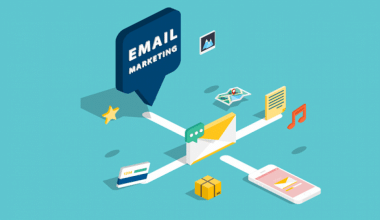Almost all shopkeepers recognize that a more organized approach would benefit their company, and this is where keystone pricing comes in. Although some may find it challenging to grasp, most business owners use it regularly. After you learn more about how and why keystone pricing works, you’ll see why your company needs it so badly. It is common knowledge that the keystone pricing method is useful for determining profit. As a result, you will be happy with the final result. As a result, you’ll be able to price your products more accurately and avoid going above your profit target. Overshooting the profit margin can cause you to lose most of your customers. Consequently, this post will provide you with additional information regarding keystone pricing, including its definition, formula, technique, strategy, calculator, and many others.
Unlike other pricing strategies, keystone pricing is an authentic method used by business owners to control and set the prices of goods.
What is Keystone Pricing?
Keystone pricing is a procedure for pricing where all sales price is marked as double the wholesale amount. Regardless of the wholesale price from the company, the goods will be marked-up as double.
Keystone pricing is a traditional method that has been in existence in an age where there were no digital devices to calculate. If the prices are higher than the market price, a retail sales company may choose to reduce the real price to stimulate sales. That way, they can sell for less without incurring losses.
The keystone pricing can be utilized by any merchandise in a certain industry. While goods can be marked up or marked down at any time during sales. The role of keystone pricing is to determine the ideal timing for double marking. Keystone pricing is easy to understand. With keystone pricing, retailers can manipulate prices and even offer discounts without incurring losses.
Retailers use the keystone pricing formula for various purposes. In a scenario where the cost of goods is higher than usual, they use the keystone pricing formula to enhance the profit margins of the product. When retailers are not sure about how to price a good, keystone pricing plays a significant role by doubling prices at every stage of selling.
Why Is It Called Keystone Pricing?
It is no secret that keystone pricing has been around for a long time, but why is it called keystone pricing?
It was said to have gotten its name from a keystone magazine. This is because some magazine subscribers didn’t like how the jewelry seller put prices in a magazine that users could see on their counters.
It is called keystone pricing because it gives a better approach to calculating your profit and knowing the ideal moments to mark up or mark down a product. This is a double wholesale price strategy.
How Do You Do Keystone Markup?
As said earlier, keystone pricing is a pricing strategy that focuses on retailers doubling the wholesale price at every level of sales. Retailers use it to control profit margins in the best ways. It is flexible to use and can be easily controlled individually. But what is a keystone markup?
When some consumers hear the keystone price, they often assume the retailers are robbing them of their money. However, when a retailer sells a product at double the wholesale price, the retailer will have to pay taxes, bills, rents, wages, and more from the profit.
A keystone markup occurs when there is a ratio-gross margin of 100% of the actual price. Keystone markup is usually 50% when retail sells at the double amount of the product.
With keystone markup, retailers can easily double the prices, offer discounts, and still make profits. Although, not all retailers are successful with keystone markup, because it has certain limitations. But retailers that can easily double their prices include small-scale businesses, malls, departmental stores, sport-ware stores, jewelers, and others.
What Are the 4 Pricing Strategies?
There are various pricing strategies for retailers. However, here are the four pricing strategies:
#1. Competitive Pricing:
Retailers often use a Competitive pricing strategy for different reasons. This strategy can be used by setting your price lower than that of a competitor; the Same products at different prices, the lower the better.
Competitive pricing should not be used in every situation, because it does not come with a better profit margin. However, this strategy will most likely keep you at the top by gaining more customers through price reductions.
#2. Cost-Plus Pricing:
Unlike competitive pricing, you do not have to reduce your prices. With cost-plus pricing, you will be able to add some percentage to the production cost. You will take the product costs, add in variable and fixed costs, and get to include a markup at every level of sales.
This is one of the most commonly used pricing strategies for retailers because it is fast and easy to use.
#3. Dynamic Pricing:
Retailers use a dynamic pricing strategy to control the prices of a product for several factors.
Prices can be adjusted based on customer demand, supply, and others. Also, many factors can cause fluctuations n price, and this will serve as an opportunity for retailers to adjust their prices.
Dynamic pricing can be beneficiary to the retailer, and in some cases, it can pose a threat to the profit margin. Either way, retailers can manipulate prices concerning variables.
#4. Value-Based Pricing:
Regardless of the size of your business, utilizing the value-based pricing strategy will help you in the long run of your business. Value-based pricing will allow you to set prices based on what consumers believe your product is worth.
The wholesale price may be disregarded, but the pricing will be based on the actual value of the product.
How Do You Find the Retail Price?
Finding the retail price is pretty simple. Calculating the retail price will give you the actual rate you have to sell the products. Note that if prices are wrongly calculated, customers may seek your competitor’s price. And that is why it is crucial to find the retail price for a product.
You can find the retail price with these easy methods:
To get the retail price, you have to add the cost of goods and markup together.
Wholesale price (costs of goods) + Markup= retail price.
Another method that can help You get the retail price is multiplying the cost of goods by 2.
Costs of goods X 2= retail price.
How Do You Calculate a 30% Markup?
Subtract the unit cost from the selling price, divide by the unit cost, and multiply the result by 100 to get the markup percentage.
You can also get the markup by deducting the costs of goods from the retail price.
Retail Price – Cost of Goods= Markup
If the sales price is $15, and the retail price is 20, the markup percentage would be ($20- $15)/$15= 0.50 x 100= $50.
What Is a Good Markup for Retail?
Deciding on what a good markup may vary on the product and industry. However, most retailers would agree that a good aiming for a profit margin of 35% to 50% is ideal for any product. With this profit margin, you can offer discounts or attempt competitive pricing.
To calculate the markup for retail, you have to deduct the costs of goods from the retail price.
Markup=Retail Price – Cost of Goods
Keystone Pricing Formula
The keystone pricing formula is quite straightforward to use. Before technology became a thing, retailers used the keystone pricing strategy to set prices. This is a pricing formula where wholesale prices are multiplied by 2.
At each point and level of sale, retailers can sell their goods twice the amount they got them.
This pricing method is commonly used by retailers, because it is easy to use, and you do not need to go overboard with its formula. And it also provides a better profit margin than other pricing strategies.
As said earlier, the keystone pricing formula is easy to understand. Here is the keystone price formula:
Keystone Price = Wholesale Price x 2
Every retailer should be familiar with the Keystone pricing formula. Not only will it increase your profit margin, but it will also cover some of your operation costs if applied accurately. It is easy and flexible to use. It is also one of the best pricing strategies for small-scale businesses.
Netapp Keystone Pricing
Netapp keystone is an application best known for its hybrid cloud strategy and services. It is best for small businesses looking for software that can help manage their storage, finances, and more. It offers a unique portfolio of payment solutions and reduces financial issues and risks.
With Netapp keystone pricing, you can get the best, as it comes with storage-as-a-service (STaaS) for businesses and helps to manage businesses in different ways. You can manage your business and its finances. Netapp keystone pricing is easy to use. It has a free trial for new users.
However, to utilize the full feature of the app, you will be required to pay for a monthly subscription. Its pricing varies from one another, all depending on what your needs are. To estimate your monthly subscription, you need to enter 9 easy numbers- deployment location, cloud data services, contract term, on-premises workload capacities, and others.
Keystone Pricing Method
The keystone pricing method is a pricing technique, where the price is doubled at every level of sales. The retailer will get to sell his goods for double the price he got them.
This method is ideal for a few businesses, such as small businesses, sportswear stores, mom-and-pop shops, novelty stores, and other similar stores. However, flea markets, specialty stores, e-commerce web stores, and other similar stores should avoid the keystone pricing method.
The keystone pricing method is multiplying the wholesale price by 2.
Keystone Pricing Calculator
To calculate the keystone price of an item, start with the wholesale price of that item and multiply it by two.
Keystone price= wholesale price x 2.
Keystone Pricing Strategy
Goods priced using the Keystone Pricing Strategy have a markup of 100% of the wholesale cost.
This strategy is suitable for small businesses because it has flexible prices that will help enhance profit margins. It is also easy to use and also flexible.
Is the Retail Price the Same as the Selling Price?
Yes, the retail price is the same as the selling price.
How to Calculate the Retail Price?
Retail price=wholesale price (costs of goods) + Markup
Who Should Avoid Keystone Pricing?
Flea markets, specialty stores, e-commerce web stores, and other similar stores
Conclusion
Keystone pricing is suitable for small businesses. It was used for a long time before computers became a thing. And since the emergence of technology, it keeps getting better. While it may not be ideal for every business, it works best when applied properly. We hope this overview is helpful in your search for a keystone pricing strategy.
- Cost-plus Pricing Strategies: Formula and Examples
- COST PLUS PRICING: Meaning, Example, Advantages & Disadvantages
- What Makes Soda Pdf the Best Tool for Your Business?
- WHOLESALE BUSINESS: Meaning, Which to Start, and How to Start
- WHOLESALE REAL ESTATE CONTRACT: Understanding Wholesale Real Estate Contract
(Sematext)






